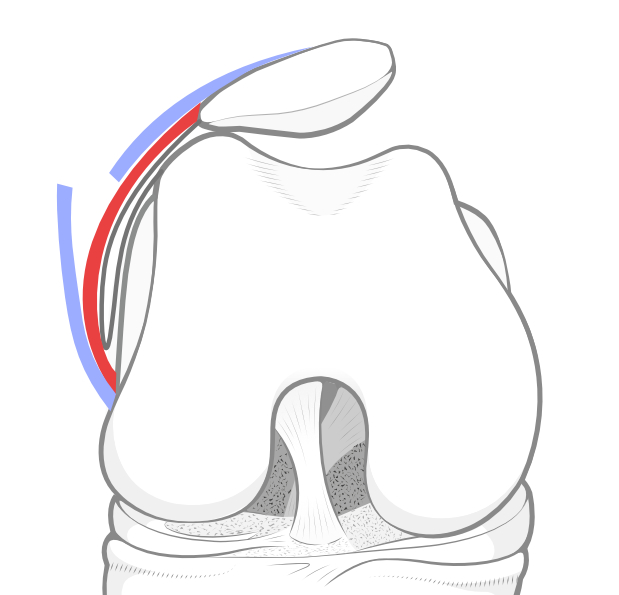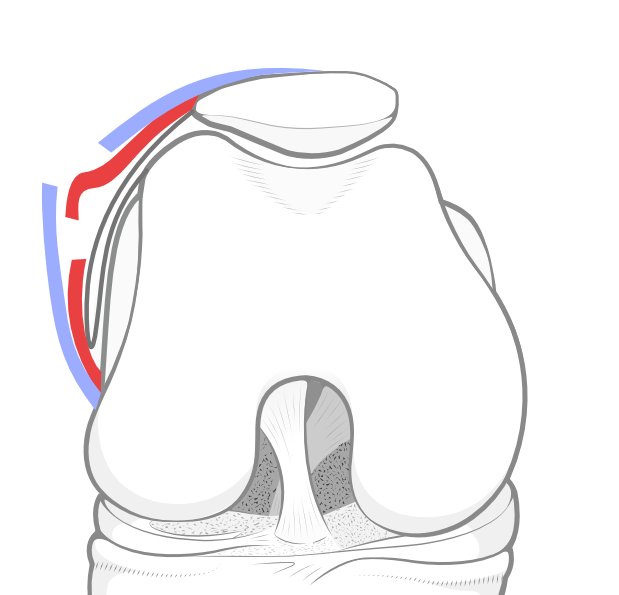Lateral retinacular lengthening is a procedure to improve patellar alignment. This is done by cutting and sliding the superficial layer of retinaculum over the deep layer to allow a controlled release of tension.
 Page updated January 2024 by Dr Sheila Strover (Clinical Editor)
Page updated January 2024 by Dr Sheila Strover (Clinical Editor)

The superficial layer of the lateral retinaculum is released.

At a lower level, the deep layer is also released, allowing the patella to un-tilt.

When the patella is in a good position the two layers are sutured together in the new position.
What is the difference between lateral release and lateral retinacular lengthening?
The lateral retinacular lengthening procedure allows the surgeon to control the tension in the retinaculum, so that the patella is in a better position but the lateral retinaculum is still functioning as a guy rope.
Forum discussions
- Info on Open Lateral Lenghthenig of the Retinaculum
A group of patients clear up their confusion regarding the difference between lateral release and lateral retinacular lengthening.
Peer-reviewed papers
-
Quote:
"The advantages of [lateral retinacular lengthening] include controlled lengthening that maintains the continuity of the vastus lateralis (thereby decreasing quadriceps weakness and atrophy and allowing faster rehabilitation), prevention of [surgery-induced] medial instability, prevention of excessive swelling, and avoidance of egress of synovial fluid in the subcutaneous tissues."
Citation: Hayden DJ, Doshi C, Parikh SN. Lateral Patellar Retinaculum Z-Lengthening. Arthrosc Tech. 2021 Jun 28;10(7):e1883-e1887. doi: 10.1016/j.eats.2021.04.010. PMID: 34336590; PMCID: PMC8322702.